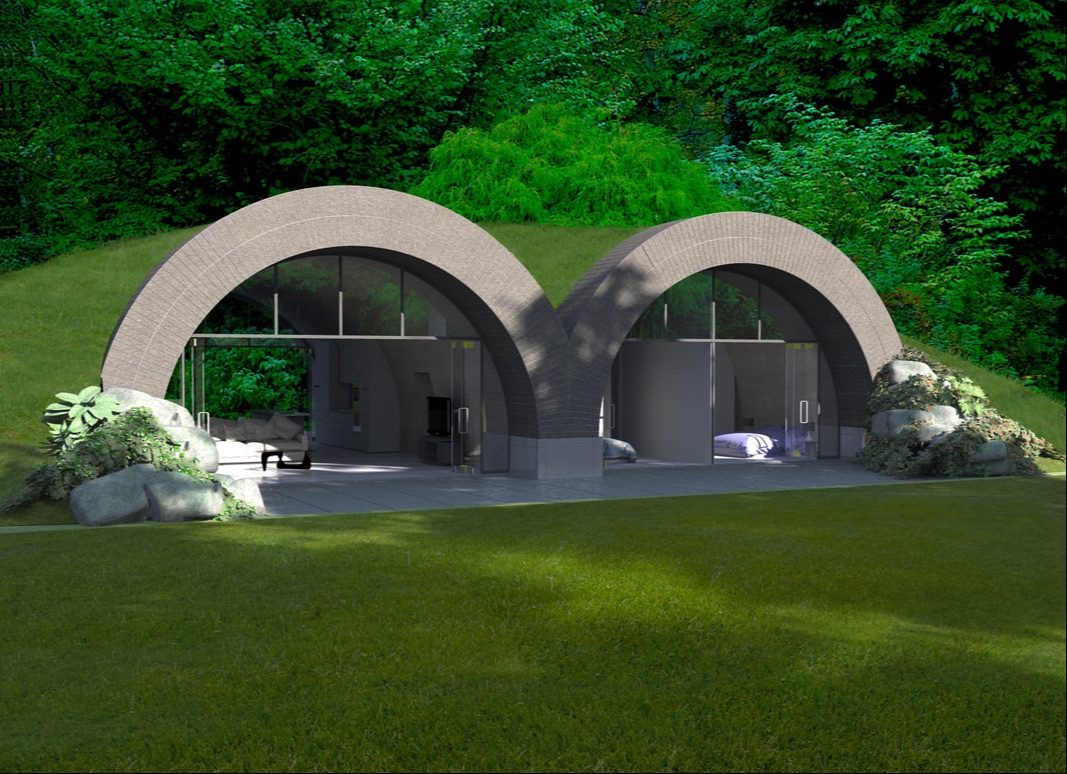As the world increasingly recognizes the importance of sustainable living, innovative architectural solutions are gaining prominence. Among these, green roofs, earth sheltered houses, and underground homes stand out for their ability to harmonize with nature while providing energy-efficient and eco-friendly living environments. This article delves into these fascinating concepts and their role in modern eco developments.
Green Roofs: A Breath of Fresh Air
Green roofs, also known as living roofs, involve the cultivation of vegetation on building rooftops. This eco-friendly solution not only enhances the aesthetic appeal of structures but also offers numerous environmental benefits. By incorporating a layer of soil and plants, green roofs help reduce urban heat islands, lower energy consumption, and improve air quality. The integration of green roofs into urban architecture exemplifies a step towards sustainable city living. Moreover, green roofs provide additional insulation, thereby reducing the need for artificial heating and cooling systems.
Earth Sheltered Houses: Harmonizing with the Earth
Earth sheltered houses are a remarkable example of sustainable architecture that utilizes the earth's natural insulation properties. These homes are either partially or completely built into the ground, which significantly reduces energy costs by maintaining a stable indoor temperature throughout the year. The concept of earth sheltered houses is not new; ancient civilizations often used this method to create durable and energy-efficient homes. Modern earth sheltered houses combine these traditional principles with contemporary design, resulting in structures that are not only sustainable but also resilient to extreme weather conditions.
Underground Homes: The Future of Sustainable Living
Underground homes take the concept of earth sheltered houses a step further by completely embedding living spaces below the ground. These homes offer unparalleled energy efficiency due to the earth's natural thermal mass, which helps maintain a consistent temperature. Underground Houses are also known for their minimal environmental impact, as they blend seamlessly into the landscape. The reduced exposure to external elements makes underground homes particularly advantageous in regions prone to harsh weather conditions. By utilizing the earth's natural resources, underground homes represent a cutting-edge approach to sustainable living.
Eco Developments: Building a Greener Future
Eco developments encompass a wide range of sustainable practices aimed at reducing environmental impact and promoting a healthier way of living. These developments often incorporate elements such as green roofs, earth sheltered houses, and underground homes to create holistic, eco-friendly communities. The goal of eco developments is to minimize the carbon footprint while maximizing the use of renewable resources. This approach not only benefits the environment but also enhances the quality of life for residents by providing energy-efficient, healthy, and aesthetically pleasing living spaces.
In conclusion, the integration of green roofs, earth sheltered houses, and underground homes into modern architecture marks a significant step towards sustainable living. These innovative solutions not only address the pressing issue of climate change but also pave the way for future eco developments that prioritize harmony with nature. By embracing these concepts, we can create a greener, more sustainable world for generations to com.





Comments